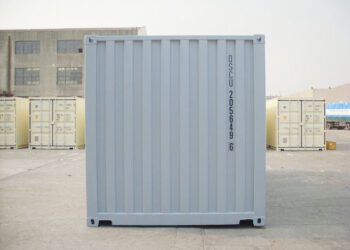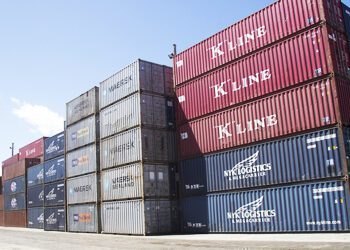How you ever wondered how to build a storm shelter out of a shipping container? Or wondered how to build a root cellar out of a shipping container? Both are somewhat similar in their structure and design requirements. It starts by ensuring your land is suitable for this project and then outlining a construction plan. You will need to consider many different aspects of your new cellar or storm shelter as you want to make sure it is structurally sound and built correctly. Whether you are building a root cellar from a shipping container or building a storm shelter from a shipping container, you will need a plan on how to execute both of these projects. Here we will outline 4 practical tips for planning your container storm shelter or root cellar.
In most scenarios, you should be able to bury your container fully or partially underground. However, you will need to research the building permits and restrictions that have been put in place by your local government. A buried shipping container as a root cellar is ideal for people who don’t have a cold cellar in their home and are looking for an alternative construction method. Whereas a buried storm shelter away from your home and trees is a great option to keep you safe during an unexpected storm or natural disaster.
Once you have made sure you have the proper zoning and permits in place, you will need to determine what area of your property you want to place the shipping container for your storm shelter or root cellar. Underground shipping container shelters will need to be placed in an area of your property that will be capable of entry and exit before and after a storm – for example, in an open area, as far away from trees and your home as possible. A shipping container as a root cellar has more flexibility when building on your property as it can be closer to your home and shaded areas. Once you have decided where your buried shipping container will go, we recommend marking the site to visualize how large the space will be.
When designing your storm shelter plans or your root cellar plans, you will want to ensure you are choosing the most structurally sound design to fit the needs of your partially or fully buried container. In most cases, you will want to build a retaining wall or support around the sides of your container to combat the press from the earth surrounding it. Shipping containers are structurally sound and sturdy, but the walls will possibly require additional support when bearing the weight of the soil.
A storm shelter is fully underground to protect the structure with the top on the flat ground. Installing a hatch on the top as well as on the inside that leads to stairs to the surface will be necessary for a safe and accessible exit.
A root cellar can be partially underground or fully underground, as long as it’s protected from humidity and light.
Ventilation and airflow are essential when you modify your container, especially for a storm shelter, to ensure everyone can stay comfortably inside the container. Adding a few extra doors and vents will make the experience more suitable if a storm hits your city. For a root cellar, ventilation will also be necessary for safe access when going in and out to grab food storage items.
If you live in a climate that experiences very hot and very cold temperatures, insulating the container will be ideal for monitoring the temperature of your root cellar or the storm shelter. You don’t want your root cellar to overheat, thus resulting in your food being spoiled. You also don’t want your storm shelter to be freezing cold during a rough storm that may hit your area. There are many ways to insulate a container based on your budget and needs – check out our other blog post on how to insulate a shipping container.
Emergency supplies should be stored in your storm or tornado shelter, as you may not have time to grab them as you move from your home into the shelter when the weather takes a rough turn. Emergency supplies include first aid kits, blankets, warm clothing, non-perishable food items, water, flashlights, batteries and maybe even a board game to keep you busy.
A root cellar will need natural wood shelving and storage bins to keep produce and food fresh. Blankets are a great tool to cover up any areas exposed to light that may shine through.
Using a shipping container as a storm shelter or root cellar is a great cost-effective way to build either of these structures. Shipping containers are sturdy and structurally sound at all four corners and can support a significant amount of weight on top. Building out the support of either side will be a low-cost alternative to building the entire structure from the ground up as a storage container provides you with the structure. Finally, shipping containers have been used in many forms, such as a tiny home that provides a safe living space for individuals wanting low-cost housing or eco-friendly housing because they are so customizable. Making it a great alternative to build a storm shelter or root cellar.
Have you been considering building your storm shelter or root cellar? Why not save time and money by purchasing a new or used container to transform into a functional storm shelter or root cellar to keep your produce and jarred food fresh.
Here at Coast Containers, we offer different types and sizes of shipping containers. Whether you want a new or used container, we’ve got you covered. All of our shipping containers are guaranteed to be wind and watertight, have solid floors, are rodent-proof and have fully functioning doors.
Contact us today, and we would be happy to help you purchase the right container for your next project!




